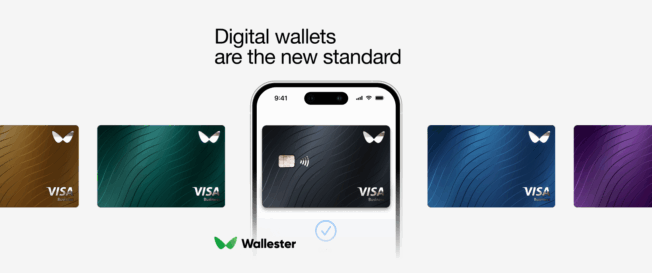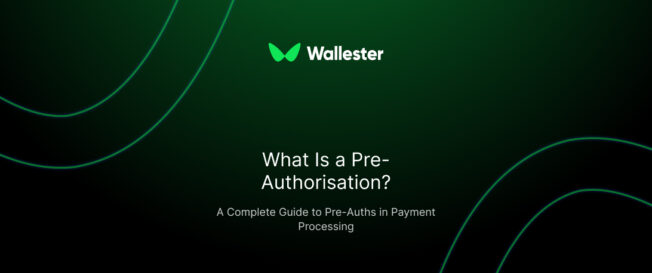Launching a bank in Europe has never been more appealing. The region’s regulatory harmonisation, booming fintech ecosystem, and demand for digital-first financial services have created fertile ground for innovation. PSD2 (Revised Payment Services Directive) opened the market to new players. Embedded finance is blurring the lines between banks and non-banks. And digital-native customers now expect seamless payments, instant onboarding, and real-time access to their money.
But beneath the surface, creating a licensed bank in the EU is a long, expensive, and heavily regulated process. It requires years of preparation, millions in capital, and a permanent compliance infrastructure.
This guide breaks down what it really takes to start a bank in Europe – the licensing options, regulatory hurdles, and alternative routes that allow fintechs to go to market faster and with less risk.
Step 1: Choose the Right Banking Model
The first decision is strategic: what kind of “bank” are you actually building?
Full-Service Bank
A traditional credit institution licensed under EU law can accept deposits, issue loans, and provide a broad range of financial services. It’s the most powerful license type – but also the most difficult to obtain. Applicants must demonstrate sound governance, substantial paid-up capital, and long-term sustainability.
Typical use case: a company aiming to operate as a standalone financial institution, offering current accounts, savings, lending, and payment products directly to consumers or businesses.
Digital or Niche Bank
Many new entrants focus on specific verticals – for example, SME banking, neobanking for freelancers, or digital wallets. These models often operate under lighter regulatory frameworks such as Electronic Money Institution (EMI) or Payment Institution (PI) licenses.
They can’t hold deposits in the traditional sense, but they can issue electronic money, process payments, and offer cards linked to stored balances.
Key difference:
- A bank license allows you to lend and take deposits.
- An EMI license allows you to issue electronic money and payment cards.
- A PI license allows you to process payments but not issue e-money (a digital alternative to cash – allows users to make cashless payments with money stored on a card or a phone).
For most fintech startups, the EMI or PI route is more attainable – both in terms of cost and regulatory burden – while still enabling competitive digital banking products.
Step 2: Understand the Regulatory Framework
A complex web of EU-wide regulations and national supervision governs banking in the EU.
The Key Players
- European Central Bank (ECB): Oversees significant banks and authorises credit institutions in the euro area.
- European Banking Authority (EBA): Sets common regulatory standards and ensures consistent supervision across member states.
- National Competent Authorities (NCAs): Handle day-to-day supervision and licensing applications within each country.
Core Directives and Regulations
- CRD/CRR (Capital Requirements Directive/Regulation): Defines prudential standards and capital adequacy rules for banks.
- PSD2 (Payment Services Directive 2): Governs payment service providers and enables open banking.
- AMLD5/6 (Anti-Money Laundering Directives): Sets the framework for AML and KYC obligations.
The application process for a full banking license typically involves submitting extensive documentation — a business plan, governance structure, financial forecasts, IT and risk management frameworks, and proof of sufficient capital.
Timeline: 12–24 months, often longer.
Approval rate: Low, unless the applicant already has strong institutional backing and deep financial expertise.
By comparison, an EMI license can be obtained in 6–12 months, with lighter documentation and lower capital requirements – though national regulators vary in strictness and timelines.
Step 3: Funding and Capital Requirements
Capital is one of the defining barriers to entry.
Minimum Capital Thresholds
- Bank license: €5 million minimum initial capital (often higher, depending on business scope).
- EMI license: €350,000 minimum.
- PI license: €125,000 minimum.
That’s just the starting point. Ongoing capital adequacy requirements apply, and regulators expect firms to demonstrate resilience under stress scenarios.
Hidden Costs to Consider
Beyond the initial capital, running a regulated financial entity involves:
- Compliance and AML functions
- Legal and audit costs
- Cybersecurity and IT systems
- Mandatory insurance and deposit protection contributions
- Ongoing supervisory fees
Realistically, launching even a small digital bank can cost €10–20 million before the first customer signs up.
Step 4: Operations and Infrastructure
Licensing is just the beginning. A functioning bank needs a robust operational and technological foundation.
Core Components Include:
- Core banking system: To manage accounts, transactions, and ledgers.
- Card issuing and payment processing: Integrating with Visa, Mastercard, or a third-party issuer.
- AML/KYC systems: Automated screening, transaction monitoring, and reporting.
- Risk and compliance teams: Qualified professionals with structure and policies approved by regulators.
- Governance and audit: Independent board members and internal control functions.
Regulators also assess the fitness and propriety of the management team. In most cases, you’ll need:
- A CEO with banking experience.
- A Chief Risk Officer, Chief Compliance Officer, and MLRO.
- A board of directors with relevant expertise and independence.
Building all this from scratch is not just expensive — it’s a multi-year project.
Step 5: Key Partners When Starting a Bank
Given the complexity, many fintech founders realise that building a bank from the ground up isn’t always the most innovative way forward. Instead, they partner with licensed providers offering Banking-as-a-Service (BaaS), embedded finance or white-label issuing solutions.
These partnerships enable companies to launch their own branded cards and payment products without undergoing the whole licensing process.
Faster Go-to-Market
You can issue Visa or Mastercard products in weeks rather than years. The infrastructure, including licensing, compliance, settlement, and reporting, is already in place.
Lower Risk and Cost
You operate under your partner’s regulatory umbrella, focusing on user experience, product innovation, and growth – not on supervision reports and capital buffers.
Example: Wallester White-Label
Wallester White-Label provides the full technology stack and regulatory coverage for companies that want to launch financial products across Europe.
Through Wallester, fintechs, lenders, and embedded finance providers can:
- Issue physical and virtual Visa cards instantly.
- Support multi-currency accounts and real-time transaction controls.
- Integrate via API or custom-branded web and mobile apps.
- Access European BINs and regulatory coverage compliant with PSD2 and AMLD standards.
Instead of building a bank, you can build your brand – with full control over customer experience, pricing, and design, while leveraging Wallester’s infrastructure.
Why Partnering Beats Building (For Most Fintechs)
Launching a bank gives full control but also full exposure to regulatory, operational, and financial risk. For startups and scale-ups, the opportunity cost is immense: time spent on licensing is time not spent acquiring customers.
Partnering with an established card issuer or BaaS provider delivers the same market capabilities – payments, cards, compliance-ready infrastructure – but without the lengthy setup process.
In short:
- Building a bank = control + complexity + capital.
- Partnering = flexibility + speed + scalability.
That’s why even large fintechs prefer white-label solutions for specific product lines. It’s faster to market, fully compliant, and lets you validate your business model before committing to a banking license.
Conclusion: Build the Experience, Not the Bureaucracy
Starting a bank in the EU is possible – but it’s not for the faint-hearted. The regulatory process is rigorous, the capital demands are high, and the timeline is long.
For most fintech entrepreneurs, the smarter move is to partner with a licensed provider that offers the same capabilities under a compliant framework.
With Wallester White-Label, you can issue cards, manage payments, and scale your financial products across Europe – all without needing your own banking license.




